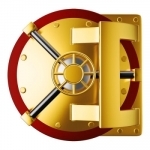
Photo Grid Pro Collage Maker & Selfie Editor: Art of Photography Studio
Photo & Video and Lifestyle
App
Enter the most beautiful photo editing studio! Photo Grid Pro Collage Maker is your new picture...
Cash Journal
Finance and Productivity
App
The app which will keep you from losing track of your expenditures! On the go, on vacation, business...

NLB Klikin Slovenija
Finance
App
Klikin je brezplačna mobilna aplikacija, ki omogoča, da: - poiščete najbližji NLB Bankomat in...

Scanbot Pro: Scanner App & Fax
Utilities and Productivity
App
Scanbot is the best mobile scanner app for documents and QR codes. Create high-quality PDF or JPG...

Islamic Calendar+ Prayer time, Athan, Qibla, Quran
Reference and Education
App
Islamic Calendar Plus 15 Islamic Apps for you're iPhone, iPod and iPad. App Features: • Quran...

fortunica - Tarot Advice
Lifestyle and Entertainment
App
Are they the one? Should you take that job? Feeling confused and do not know what to do? Do not...

Password Manager Data Vault - Safe, Secure, Wallet
Productivity and Business
App
The Leading Password Manager for iPhone, iPad & iPod touch ◆ AES Encryption ◆ Touch ID ◆...

nearbuy.com: The Step-Out App
Lifestyle and Food & Drink
App
More than 4 million people across India are using nearbuy.com right now to discover new experiences...

Lloyds Bank Mobile Banking
Finance and Business
App
When it’s hard to find a moment to do those small but important things, our Mobile Banking app is...

Westpac Mobile Banking
Finance and Utilities
App
With Westpac Mobile Banking you can take your bank with you wherever you go. Key features •...
